



FRED DEMATTEIS SCHOOL OF ENGINEERING AND APPLIED SCIENCE
ENGINEERING THE
















The 2023-2024 academic year for the Fred DeMatteis School of Engineering and Applied Science began with the opening of the new Science & Innovation Center (SIC), which now houses nearly half of our academic units and provides students with an ultramodern learning environment. Among the collaborative spaces is a makerspace available to faculty and students throughout the University, enabling them to create works of utility and art as inspired by their imaginations. You’ll see some pictures of this impressive new building within these pages.
I am also proud to announce the launch of the DeMatteis Experiences in Professional Training and Hiring (DEPTH) program. This new initiative ensures that all engineering students, beginning

“This new initiative ensures that all engineering students, beginning with the fall 2024 entering class, will have completed at least one professional activity prior to earning their diplomas.”
INSPIRED TEACHING:
• Classes are conducted by outstanding faculty (not by teaching assistants)
WELL-ROUNDED CURRICULUM:
RESEARCH OPPORTUNITIES:
• Supervision and support by faculty mentors
• Encouragement to present work at scientific conferences and/or publish in scholarly journals
STATE-OF-THE-ART FACILITIES:
• The new Science & Innovation Center – opened in fall 2023 – includes classrooms, laboratories, technologies, and equipment for computer science, bioengineering, and industrial engineering
• Modern laboratories available for student use across all disciplines (See list on page 5.)
EXCLUSIVE CO-OP EXPERIENCE:
• Matches engineering and computer science students with full-time salaried positions for six to eight months
• More than 200 corporate partners
• Often leads to full-time job offers after graduation
• Enhanced education in the social and natural sciences, and the humanities – an academic and professional asset
SUCCESSFUL ALUMNI:
• About 92% of recent undergraduate degree recipients* report being employed or attending or planning to start graduate school within one year of graduation
• Approximately 4,000 alumni are working in industry, government, and academia
FORWARD-THINKING FEEDBACK AND SUPPORT:
• Industry leaders on three DeMatteis advisory boards work with Hofstra faculty and administrators to develop dynamic courses and programs
• Program for women in STEM (engineering and computer science) provides students with mentoring, workshops, events, and resources
*Results are based on data collected from 2021-2022 undergraduate alumni up to 1-year postgraduation from the Alumni Outcomes survey, LinkedIn, National Student Clearinghouse, and Hofstra enrollment.
• Bioengineering, BS (Options: Bioelectricity, Biomechanics, or Pre-Medicine)
• Civil Engineering, BS
• Computer Engineering, BS
• Computer Science, BA; BS
• Computer Science and Cybersecurity, BS
• Computer Science and Mathematics, BS
• Electrical Engineering, BS (Option: Computer)
• Engineering Science, BA; BE (BE Options: Chemistry, Environmental, or Physics)
• Industrial Engineering, BS
• Mechanical Engineering, BS (Option: Aerospace)
• Computer Science, MS
• Cybersecurity (Technology), MS
• Data Science, MS
• Engineering Management, MS
• Computer Science, BA/MS
• Computer Science, BS/MS
• 4+4 Program: BS-BA/MD (with the Zucker School of Medicine at Hofstra/ Northwell)


Hofstra provides a wide range of tools that enhance the engineering and computer science education. Equipment is available for teaching, research, and experimenting.
Laboratories include:
• 3D Printer Makerspace
• Advanced Applications
• Aerodynamics and Transport Phenomena
• Big Data
• Cell and Tissue Engineering
• Civil/Environmental Engineering
• Communications
• Computer Architecture, Embedded Systems, and Mobile Computing
• Cybersecurity Innovation and Research Center
• Electrical and Signal Processing
• Electromagnetics
• Energy
• Environmental Research
• First-Year Engineering
• Geotechnical
• Industrial Engineering
• Intelligent Systems
• Linux
• Materials Analysis
• Networking
• Research and Innovation
• Robotics and Advanced Manufacturing
• Structures
• Systems and Graphics
• Ultrasound Research
• Virtual Reality
• Wind Tunnel Research
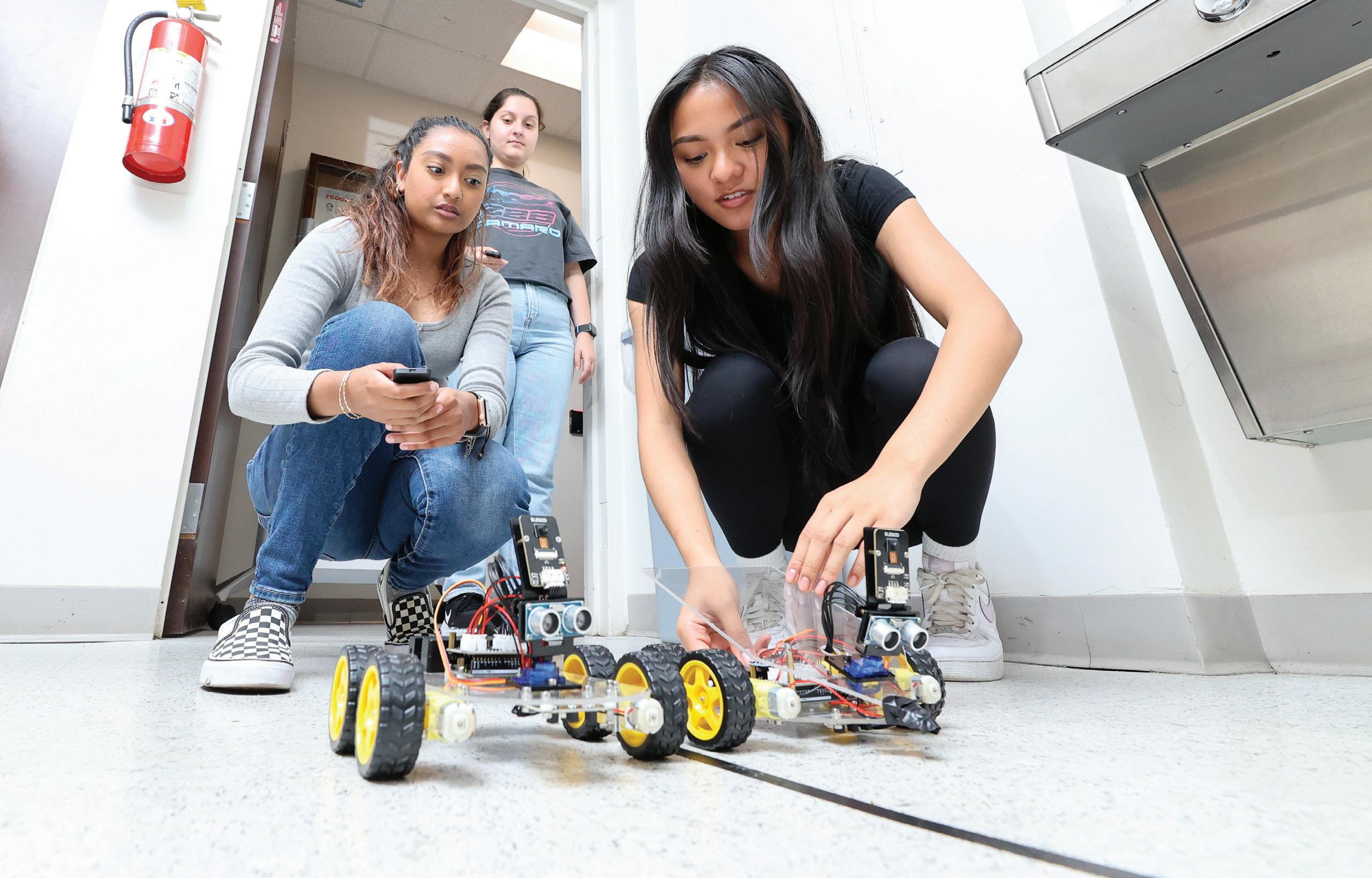
Fifteen first-year engineering and computer science students at Hofstra University spent part of their summer exploring their fields and learning more about career opportunities as part of a program designed to help women succeed in STEM.
Called the Women’s Summer Program in Computing/ Engineering (W-SPiCE), the program is open to first-year students in the Fred DeMatteis School of Engineering and Applied Science. Students are exposed to different disciplines, related majors, and professions in industrial, mechanical, environmental, and civil engineering, as well as computer science, through hands-on projects, classroom demonstrations, and field trips.
“Nurturing and supporting a diverse and inclusive student community is one of our top priorities,” said Sina Rabbany, dean of the DeMatteis School. “W-SPiCE is one of our robust initiatives to encourage a welcoming and accessible community for women in STEM.” The school has been recognized by the American Society for Engineering Education (ASEE) for its commitment to diversity, equity, and inclusion.
Pia Cameron, a computer engineering major from Kingston, Jamaica, knows the history, challenges, and progress of women in STEM.
“My grandma was an engineer. It was really hard for her because women weren’t really accepted that much –especially Black women,” Cameron said. “So, I like how everything is evolving and women are more accepted.”
“W-SPiCE is a special program,” said adjunct instructor Gozde Ustuner. “Having weeks of specialized instruction allows the group to learn by doing – and figuring things out together. They are able to troubleshoot and make adjustments based on results, not grades or professor feedback. It really teaches them to think like engineers.”
Several students said that the W-SPiCE program creates a sense of community and camaraderie that is especially important for women in STEM.
“There are not a lot of women in engineering,” said Stella Sourelos, a computer engineering major from Queens, New York. “To get to know other girls here is very inclusive and a good opportunity.”
The W-SPiCE program begins at the end of May and runs for five consecutive weeks. Participating students receive a $2,500 stipend to help cover costs such as housing and transportation.






Bioengineering major Hometown: Brooklyn, New York

How did you get involved in the Advanced Summer Program in Research (ASPiRe)?
Dr. Nicholas Merna reached out looking for people to join his team. I decided to do it but surprised myself with how much I enjoyed it. I ended up doing ASPiRe two summers in a row, and I’ll continue the research until I graduate and maybe beyond.
What makes ASPiRe so great?
I understand bioengineering a lot more by applying it, and ASPiRe really gives you the time to invest in your research. During the school year, there are so many other responsibilities, and I don’t have as much time to dedicate to the project … although I do as much as I can.
What is your research project about?
We work with leaves.
The leading cause of death in the United States is coronary artery disease, which involves a partial or complete blockage in the blood vessel that prevents proper blood flow to the heart. Our research project focuses on creating vascular grafts to be implanted to aid the damaged vessel. Current vascular grafts are developed from synthetic materials, but our 3D graft is developed from a natural material known as leatherleaf viburnum, which is a leaf.
What does the future hold for you?
I’m planning to go to medical school and pursue an MD/PhD.
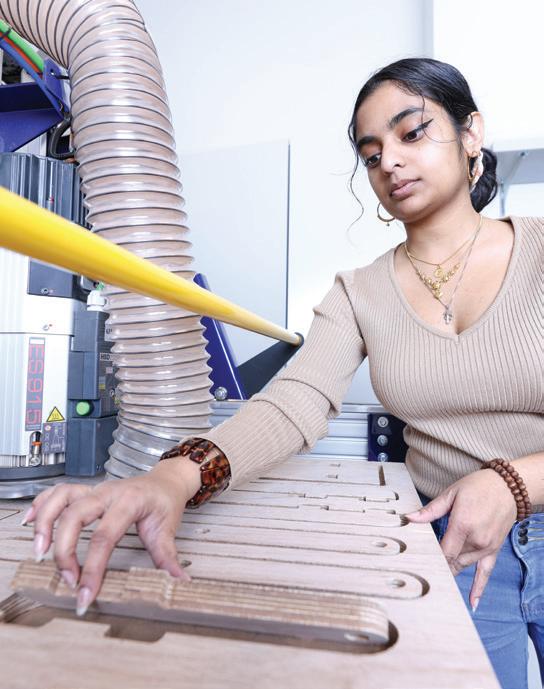


In fall 2023, Hofstra held the ribbon-cutting for the 75,000-square-foot Science & Innovation Center, shared by the DeMatteis School of Engineering and Applied Science and the Hofstra Northwell School of Nursing and Physician Assistant Studies.



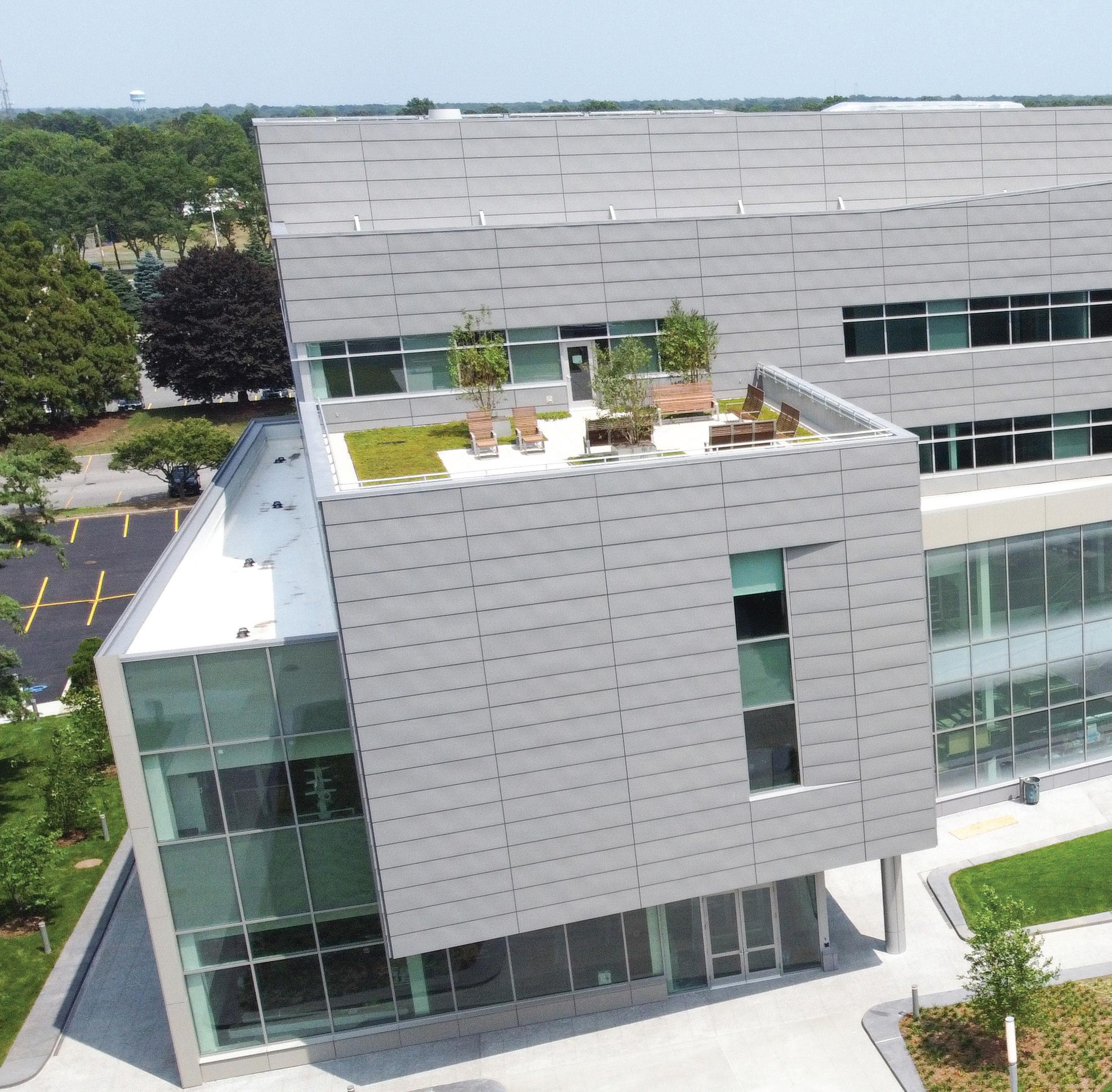





This new, energy-efficient, four-story building was designed to maximize hands-on learning and team collaboration and incorporate the latest technology. It includes:

• Spacious student study rooms
• Outdoor green spaces
• Eight science labs, including Big Data, Intelligence Systems/Cognition/Robotics, Virtual Reality, and Gaming and Graphics, supported by more than 200 computer workstations located throughout the building
• Spacious Bioengineering Laboratory Suite composed of six research and instructional areas
• Large makerspace for project realization and an Industrial Engineering Lab for analyzing work activities
• Modern First-Year Engineering Lab with a tool room that enables team design and project development in a student’s first semester


In today’s competitive work environment, it’s important to have hands-on experience beyond the classroom. The DeMatteis School is making sure Hofstra engineering students are set up for success with a new graduation requirement. Beginning in fall 2024, entering engineering students will gain career exposure through the DeMatteis Experiences in Professional Training and Hiring (DEPTH) program.
DEPTH covers an umbrella of opportunities for students to enhance their education and prepare for professional careers. Students choose from a diverse range of activities to best fit their plans, such as faculty-supervised research,
paid employment, or volunteer work. Co-ops and internships rank at the top of the list of options.
While both co-ops and internships yield practical experience, a co-op is a more substantial time commitment than an internship. Co-op students can expect to dedicate six to eight months to work in a field related to their major, while an internship is typically eight to 10 weeks and can often be completed over the summer. While either option satisfies the DEPTH requirement and is a great resume addition, the co-op is particularly valued among employers, as repeatedly expressed by the DeMatteis corporate partners and advisory boards.

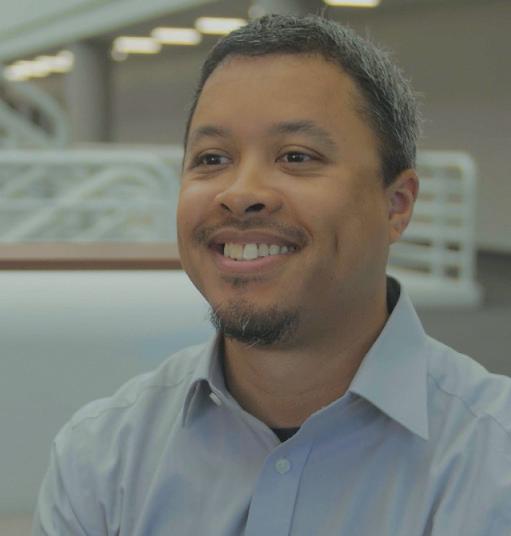


Michael DeMartino ‘24
Computer Science Major Co-op - Altice USA/Optimum
“Hofstra set me up with really good fundamentals in programming and coding, and I was able to expand upon those fundamentals at Altice.
All the prep that Hofstra put me through – interview and resume prep – had me extremely confident going into my interview, and I had no doubt that I would get the position.”

Bryn Chung
Senior Director of Software Development
Altice USA/Optimum
“In a co-op applicant, we’re really looking for the ability to learn. We have a myriad of technologies in our environment, anywhere from network engineering to telecoms, and the ability to learn is something that we’re looking to pipeline into our organization.
We’re a local company and we like local universities in the area – and Hofstra candidates have always been at the top of the list. They are always ready to go, ready to learn, and hit the ground running.”
Chloe Okeahialam ’21
Pursuing MS in Engineering Management Co-op - Northwell Health
I like that I got the chance to be thrown into the work right off the bat and see the day-to-day work in real time. It definitely gives you a proper expectation of what to expect in your future career.
Jason Deonarain Senior Manager, Agile Transformation Northwell HealthWe have seen that co-op students bring a breath of fresh air – just a can-do attitude – because they’re so willing to take that classroom-based knowledge and really test the waters.
It’s a great journey for them, and seeing this transformation of growth during their time here is personally satisfying.

”With AI and ChatGPT in the headlines every day, it’s important that we provide training for the technical aspects, and for the human aspects as well. These students, all from diverse backgrounds, represent the generation of gatekeepers, who will need to ensure that data remains free from bias and that ethics lead conversations about algorithms. We are proud to be part of that evolution.”
Susan Poser President, Hofstra UniversityWhile everyone is talking about artificial intelligence, Hofstra is doing something about it. “Many of our computer science courses are centered around machine learning – how to program it, how to protect it, and how to be responsible in its applications,” said Krishnan Pillaipakkamnatt, professor of computer science.
Beginning in the summer of 2023, the University joined with Break Through Tech to provide advanced and practical training for women and nonbinary students in this fast-emerging field.
Break Through Tech, an organization dedicated to achieving gender equality in technology careers, offers a yearlong AI program at no cost to accepted students. It begins with a nine-week, asynchronous, skills-based course over the summer, complemented by weekly inperson lab sessions at host universities: Cornell Tech in New York City, MIT in Boston, and UCLA in Los Angeles. Hofstra University was the first satellite location for the program, providing convenience for students living on Long Island or in Queens. Six Hofstra students participated in the program.

“I am so grateful to be selected for this prestigious program,” said Abigail Rabbany, a Hofstra computer science major from Great Neck, NY. “I am fascinated by cutting-edge technologies, and I thought this would be a great opportunity to get hands-on experience in the field of artificial intelligence and machine learning.”
For the fall and spring semesters, students work in teams to tackle project-based AI challenges from leading companies – working closely with industry mentors. Internships, employment opportunities, and career guidance continue via the mentors following the program.
Hofstra has also invested in state-of-the-art labs for big data, robotics, and virtual reality to further support student exploration in the field of machine learning. These brand-new facilities are housed in the Science & Innovation Center, which opened in fall 2023. For students targeting this emerging field, the DeMatteis School offers an MS in Computer Science with a concentration in Artificial Intelligence and an MS in Data Science. Courses such as Text Mining, Data Mining, Natural Language Processing, Neural Networks and Deep Learning, and Computer Vision are part of the curriculum.
Every summer, approximately 30 undergraduate students take advantage of the opportunity to work with DeMatteis faculty members on research projects.
More than two-thirds of the DeMatteis full-time faculty participate in the Advanced Summer Program in Research (ASPiRe), which began in 2015. Participating students receive a competitive stipend to spend 10 weeks immersed in the scientific enterprise. In addition to the reward of exploring a topic well beyond what is possible in a classroom environment, they can earn co-authorship on journal publications and presentations at professional conferences. For students who are considering pursuing advanced research in PhD programs, the experience is invaluable. For those who will seek jobs in high-tech firms, it is equally enriching. In just the past two years, more than 20 students have co-written published papers. Students’ names are in bold.







Barbera, C., Hanson, M., Vaccaro, J., & Rooney, D. (2023). Experimental investigation of vortex shedding patterns behind tapered cylinder pairs. Proceedings of the International Mechanical Engineering Congress & Exposition, New Orleans, LA.
Bracero, L. A., Ghorayeb, S. R., Fukuda, R., Lim, C. E., Kouba, I., & Blitz, M. J. (2023). The effect of colorization on the fetal lung heterogeneity index. Journal of Clinical Ultrasound: Sonography and other Imaging Techniques. DOI: https://doi.org/10.1002/jcu.23422 Epub ahead of print. PMID: 36635062.
Conley, T., Diaz, N., Espada, D., Kuruvilla, A., Mayne, S., & Fu, X. (2024). IZPR: Instant Zero Knowledge Proof of Reserve, The 5th Workshop on Coordination of Decentralized Finance (CoDecFin), Willemstad, Curaçao.
de Guzman, R.C., Meer, A.S., Mathews, A. A., Israel, A. R., Moses, M. T., Sams, C. M., & Deegan, D. B. (2023). Reduced fibrous capsule elastic fibers from biologic ECM-enveloped CIEDs in minipigs, supported with a novel compression mechanics model. Bio-Medical Materials and Engineering, 34(4), 289-304.
Filiberti, F., & Ghorayeb, S. R. (2022). The use of artificial intelligence and the heterogeneity index to differentiate preterm from term ultrasound fetal lung images. 2022 BMES Annual Meeting, Orlando, FL.
Fisher, D., Choudhary, R., Alsayed, O., Doboli, S., & Minai, A. A. (2022, July). A real-time semantic model for relevance and novelty detection from group messages. 2022 International Joint Conference on Neural Networks (IJCNN), (pp. 01-08), IEEE
Ghorayeb, S. R., Blitz, M. J., Glykos, S., Lim, C. E., & Bracero, L. A. (2023). A novel paradigm for quantitative texture analysis in preterm and term fetal lung ultrasound images. 2023 International Lung Ultrasound Symposium, Trento, Italy.
Ghorayeb, S. R., Bracero, L. A., Fukuda, R., Lim, C. E., Kouba I., & Blitz, M. J. (2023). Does the colorization of ultrasonic fetal lung images affect the heterogeneity index? 2023 International Lung Ultrasound Symposium, Trento, Italy.
Ghorayeb, S. R., Fukuda, R., & Sales M. (2023). Quantitative noninvasive texture analysis of breast masses in ultrasound images: Proposal of a new gold standard. International Symposium on Ultrasonic Imaging and Tissue Characterization, Arlington, VA.
Ghorayeb, S. R., & Hirsch B. (2022). PSpice modeling of cervical and site-focused vagus nerve ultrasonic stimulation for reduced tumor necrosis factor-a production. Nature Scientific Reports, Vol. 12, 21470. DOI: https://doi.org/10.1038/s41598-022-25944-2
Ghorayeb, S. R., & Hirsch B. (2023). The engineering of medicine: Understanding the pathway for vagus nerve ultrasonic stimulation to reduce tumor necrosis factor-a production. IEEE Long Island Systems, Applications and Technology Conference (LISAT), Old Westbury, NY.


Gorbenko N., Rinaldi R., Sanchez A., & Merna, N. (2023). Small-caliber vascular grafts engineered from decellularized leaves and cross-linked gelatin. Tissue Engineering Part A, 29(13-14). https://doi.org/10.1089/ ten.TEA.2022.0223
Kuruvilla A., Daley A., & Kumar R. (2024). Spotting fake profiles in social networks via keystroke dynamics. IEEE Consumer Communications & Networking Conference (CCNC), Las Vegas, NV.
Lai, M. W., Chow, N., Checco, A., Kunar, B., Redmond, D., Rafii, S., & Rabbany, S. Y. (2022). Systems biology analysis of temporal dynamics that govern endothelial response to cyclic stretch. Biomolecules. 12(12):1837-58. PMID: 46551265.
Raymond, M., Evers, G., Ponti, J., Krishnan, D., & Fu, X. (2024). Efficient zero knowledge for regular language. (To appear) In Proceedings of 19th EAI International Conference on Security and Privacy in Communication Networks, Hong Kong, 2023.
Wong, V., Gada, S., Singh, M., & Merna, N. (2023). The development of small-caliber vascular grafts using human umbilical artery: An evaluation of methods. Tissue Engineering Part C, 29(1):1-10. https://doi. org/10.1089/ten.tec.2022.0144



Fourteen students spent a week of their January break on the West Coast visiting top-tier technology firms as part of Hofstra in Silicon Valley, a program administered by the Fred DeMatteis School of Engineering and Applied Science.
Throughout the week, students met and networked with management teams, engineers, and other personnel at Oracle, Google, Meta, CrowdStrike, SoFi, and Sony. Activities included behind-the-scenes tours of the companies’ state-of-the-art facilities as well as presentations, hybrid (Zoom and in-person) meetings, and panel discussions. The January 2024 trip represents the fifth installment of the Hofstra in Silicon Valley program.

MANI TOFIGH
Computer Science Major Class of 2026
“I was always curious to know how these big tech companies operate and manage their products on such large scales — how their simulations operate, how they optimize their workflow, what tools and technologies they use, what are some technical practices that their engineers must follow. I found this trip to be a valuable opportunity to maybe find an answer.”
Computer Science Major Class of 2024
“I learned a great deal from the employees at each company — they encouraged us to be passionate and outstanding in our work and take every opportunity given, and they reminded us that life will never go entirely as you wish. I was greatly surprised by how much we were able to accomplish during the week. We visited six companies, but also stopped by Stanford University, Apple Park, the Golden Gate Bridge, and the Computer History Museum, all while still having dinner together at the end of the day.”


Computer Science Major Class of 2025
“Being surrounded by innovation and forward-thinking individuals was truly inspiring. One of the best parts of the trip was the chance to hear from alumni who have established careers in Silicon Valley. Seeing them thrive in this environment made me realize that I, too, could achieve great things in the tech world. It was like witnessing firsthand the outcomes of my computer science degree in action.”










D. Elliott Williamstyer, assistant professor of engineering at Hofstra’s DeMatteis School of Engineering and Applied Science, is taking over the design and execution of the school’s electromagnetic engineering curriculum. The new curriculum will provide more hands-on assignments to give students experience with measuring and controlling electromagnetic waves.
“We are in the middle of the construction of an anechoic chamber that will allow students to directly measure the performance of their antenna designs in real time,” Williamstyer said. “It is my goal for Hofstra to become known as the preeminent institution for electromagnetic training on Long Island, preparing our students for successful careers in a critical field that has difficulty finding enough talent.”
The curriculum was previously managed by David Weissman, who was recently named a distinguished professor emeritus of engineering.
Both Weissman and Williamstyer conduct research in the field of electromagnetic waves, but they pursue distinct yet complementary areas of inquiry. Weissman delves into the applications of electromagnetic waves to study surface wind patterns and other wave conditions on the earth’s surface. Williamstyer is concerned with the generation and control of electromagnetic waves, continuing to push what these antenna systems are capable of. He aims to design systems that have precise control of the directions that electromagnetic waves radiate.
“I accomplish this by introducing novel degrees of freedom into radiating systems, from origami-inspired, shape-changing antennas to flexible meta-materials,” he said. “The importance of my work is the general advancement of our capabilities. As designs become
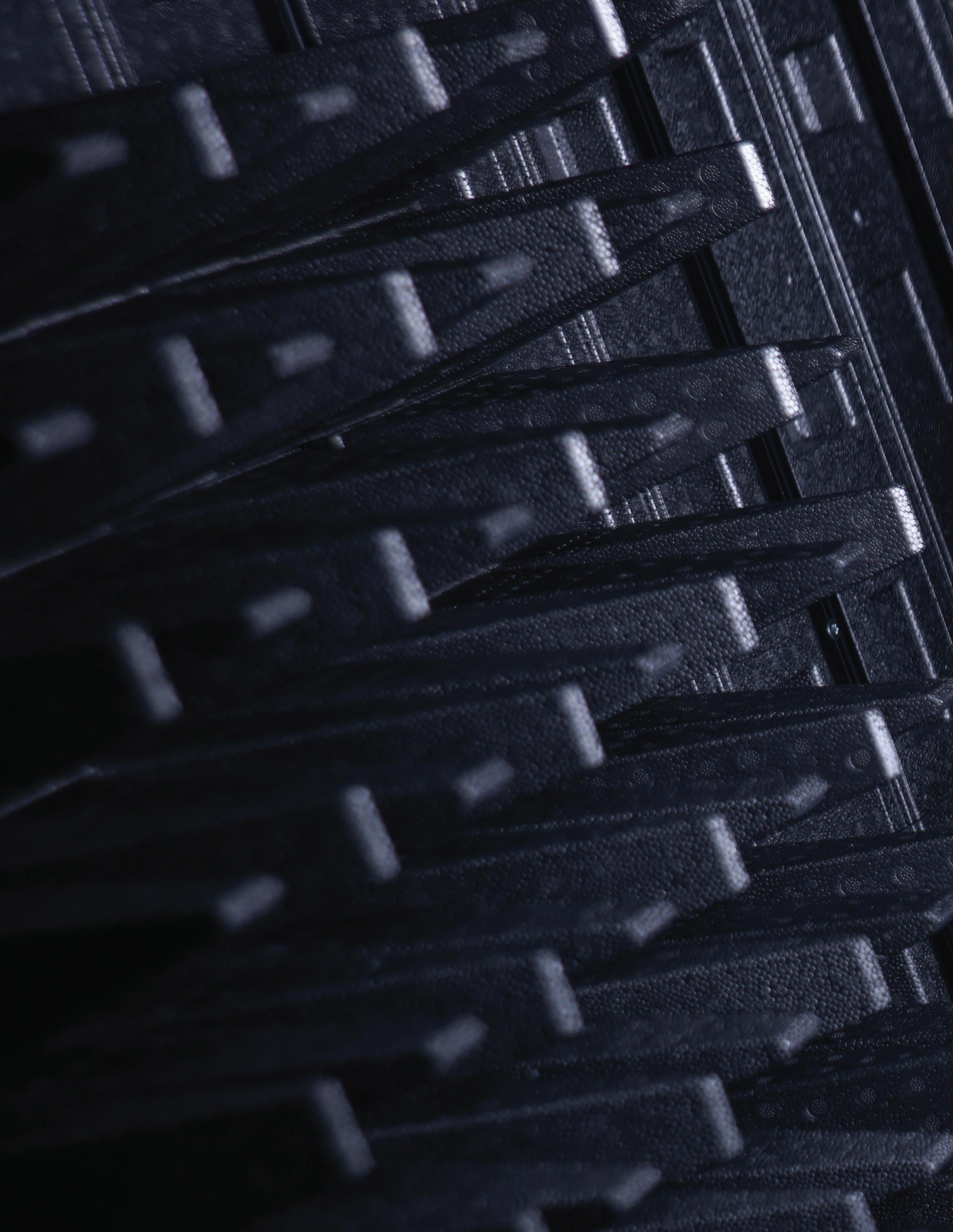
more sophisticated, our capabilities increase, and new applications are enabled. The link between my work and David’s is that, if I am successful, researchers like David will have significantly more precise tools to study our world. However, my work extends not just to remote sensing, but to wireless communication and radar systems as well.”
Williamstyer’s and Weissman’s research work in tandem – on the creation of instruments as well as the analysis of the data they collect. “My work focuses on how to construct high-performing devices, while David’s work focuses on how to use such devices to gain deeper insight into our world,” Williamstyer said.
The impact of these studies is far-reaching. Electromagnetic waves are used not only for remote sensing, but for a vast amount of infrastructure, Williamstyer said, noting they are used by radar systems for military defense, aircraft control, and car safety systems; they also form the backbone of cellphone networks, radio systems, and the internet. “Every wireless link includes an antenna that converts electromagnetic waves to and from electricity. The properties of these antennas have an outsized impact on the performance of the wireless system, from higher bandwidth for wireless communication to more resolution for our remote sensors and radar systems. Each generation of cellphone networks – 3G, 4G, and 5G – has included enhancements to these antenna systems to improve the network capabilities,” Williamstyer explained.
“As we anticipate moving forward to 6G wireless systems, new applications will challenge the size, shape, and performance of smaller adaptive antennas for mobile phones and sensing devices,” said James Nolan ‘06, co-chair of the DeMatteis School Dean’s Advisory Board,

and retired executive vice president, Research and Innovation, Inter Digital Communications Corp.
“Williamstyer’s work will benefit his students, help drive the global wireless industry, and have a local impact on commercial research and development.”
Williamstyer’s goal is to create adaptive systems that can automatically readjust their performance to account for local issues. A “dream” of his would be to construct a rapidly deployable wireless system that could supplement current cellphone networks in the immediate aftermath of natural disasters.
Lynn A. Albers
(PhD, North Carolina State University)
Assistant Professor
Mechanical Engineering
M. David Burghardt (PhD, University of Connecticut) Professor Mechanical Engineering
Mauro J. Caputi (PhD, Virginia Tech)
Director, First-Year Engineering
Associate Professor Electrical Engineering
Kevin C. Craig (PhD, Columbia University) Director, Center for Innovation Professor Mechanical Engineering
Edward H. Currie (PhD, University of Miami)
Associate Professor Electrical Engineering
Roche C. de Guzman (PhD, Wayne State University) Associate Professor Bioengineering
Sleiman R. Ghorayeb (PhD, Iowa State University) Professor Electrical Engineering
Saryn R. Goldberg (PhD, Stanford University) Associate Professor
Mechanical Engineering
Margaret A. Hunter (PhD, Rice University) Assistant Chair Department of Engineering Associate Professor Civil Engineering
Wing C. Kwong (PhD, Princeton University) Professor Electrical Engineering
Nicholas J. Merna (PhD, University of California, Irvine) Associate Professor Bioengineering
Manuel J. Miranda (PhD, Columbia University) Associate Professor Civil Engineering
Richard J. Puerzer (PhD, University of Pittsburgh) Chair, Department of Engineering Associate Professor Industrial Engineering
Simona Doboli (PhD, University of Cincinnati) Professor Computer Engineering
Xiang Fu (PhD, University of California, Santa Barbara) Professor Computer Science
Scott M. Jeffreys (MS, Adelphi University) Special Associate Professor Computer Science
Gerda L. Kamberova (PhD, University of Pennsylvania) Chair, Department of Computer Science Professor Computer Science
Chuck C. Liang (PhD, University of Pennsylvania) Professor Computer Science
Gretchen Ostheimer (PhD, Rutgers University) Professor Computer Science
Krishnan Pillaipakkamnatt (PhD, Vanderbilt University) Professor Computer Science
Sina Y. Rabbany (PhD, University of Pennsylvania) Dean, Fred DeMatteis School of Engineering and Applied Science Professor Bioengineering
Salvador Rojas-Murillo (PhD, University of Iowa) Associate Professor Industrial Engineering
David M. Rooney (PhD, North Carolina State University) Associate Dean, Fred DeMatteis School of Engineering and Applied Science Professor
Mechanical Engineering
Edward M. Segal (PhD, Princeton University) Associate Professor Civil Engineering
Minjeong Suh (PhD, Yale University) Assistant Professor Engineering Science
John C. Vaccaro (PhD, Rensselaer Polytechnic Institute) Associate Professor Mechanical Engineering
D. Elliott Williamstyer (PhD, Cal Tech)
Assistant Professor Electrical Engineering
Oren Segal (PhD, University of Massachusetts Lowell) Associate Professor Computer Engineering
Simon Shamoun (PhD, CUNY City College)
Special Associate Professor Computer Science
Jianchen Shan (PhD, New Jersey Institute of Technology)
Assistant Professor Computer Science



Dennis Ashby, BS, ’96 VP of Customer Success, Strategic Partnerships, and Growth Functionize Inc.
Kathy Azeez-Narain, BS, ‘04
Senior Vice President, Chief Digital and Customer Innovation Officer
Hoag Hospital
Doreen Bartoldus
Former Manager of Projects, Water, Construction Management
Jacobs
John D. Cameron Jr., P.E. Founder and Managing Partner
Cameron Engineering & Associates, LLP
Denise Chardavoyne, BA, ‘99
First Senior VP, Program Director, Valley Bank
Michael P. Delaney, BE, ’85
(degrees earned at Hofstra indicated by year)
Robert Ioanna, P.E., LEED AP
Executive Principal
Syska Hennessy Group
Christos Karanicolas
Senior VP of Engineering Clever Devices
Ralph Lambert, BBA, ’84
President and CEO
Axis Construction Corporation
William J. Lane, BES, ’98; MD; PhD; A(ACHI)
Director of Tissue Typing/HLA Lab Brigham and Women’s Hospital Associate Professor, Harvard Medical School
Donna Linke-Klein
Senior Product Line Director
BAE Systems
Philip Luongo

CEO
Apple Value Services, LLC

Danyel Racenet, BS, ’97 VP, Research and Development ENT/ Neuroscience Portfolio Medtronic
Shahriar Rafimayeri, BS, ’88 Former Chief Information Officer Norstella
Sajed Sahni, BS, ’01 Head of Partner Solutions Engineering, Americas Google
John Sartor, P.E. President and CEO PS&S

Paul R. Saueracker, MBA, ’78 Retired Chairman and CEO Minerals Technologies

Chief Aerospace Safety Officer
Senior VP, Global Aerospace Safety The Boeing Company
James K. Donaghy, BBA, ’89

Executive Chairman
STO Building Group
Edwin Grivins, BS, ’80
Retired, Infrastructure and Engineering Northrop Grumman Corporation
Joseph M. Heaney III, P.E.

Owner and Principal Walden Environmental Engineering, PLLC
Daphne Hornbuckle, BS, ’86 IT Manager, North Texas Region Spectrum
James J. Nolan, MBA, ’06
Retired, Executive VP of Research and Innovation
Head of Wireless and Networking Lab InterDigital Inc.

Michael Petosa
Senior Vice President of Information Technology American National Standards Institute
Ronald T. Piervincenzi, BE, ’93; PhD CEO
United States Pharmacopeia
Pragash Pillai
Principal Xtend Broadband Partners
Shila Shah-Gavnoudias, P.E. Vice President of Business Development AECOM

Anne Shybunko-Moore CEO and Owner GSE Dynamics Inc.
Stephanie Siteman Director, Security Program Management, Central Technology Chan Zuckerberg Initiative
Chris Wacker, BA, ’76 Chairperson of the Board Laserfiche
Founded in 1935, Hofstra University is a nationally and internationally recognized institution that has been cited on the Best Colleges lists of U.S. News & World Report, The Princeton Review, Fiske, Washington Monthly, Forbes, LinkedIn, and Payscale.com. Hofstra is ranked in the top 26% of U.S. colleges (The Wall Street Journal/Times Higher Education, 2023 edition) and in the top 14% nationwide among Best Value Colleges* (PayScale College ROI Report, 2024).
• Located in Hempstead, Long Island, 25 miles east of NYC
• Private, nonsectarian, coeducational
• One of only three schools in the New York metropolitan area with colleges of law, medicine, and engineering
• 117 buildings on 244 acres
• 38 academic and 41 total accreditations
• Member of Phi Beta Kappa
• 100% program accessibility for persons with disabilities
*Based on the 20-year net return on investment.

• More than 148,000 alumni
• Undergraduate students from 47 U.S. states and territories, and 75 countries; 33% of fall 2023 first-year students from outside of New York state
• 35 residence halls housing about 3,500 students
• 18 eateries, six theaters, and 205 student clubs
• Over 600,000 print volumes in the Hofstra libraries; 24/7 online access to more than 200,000 full-text journals and 900,000 e-books
• 21 NCAA Division I athletic teams


Visit our campus and discover all that Hofstra has to offer.
Go to hofstra.edu/visit to explore and register for in-person and virtual visit opportunities that are customized to your needs.
If you have any questions about arranging a visit, contact the Office of Admission at admission@hofstra.edu or 516-463-6700
For more information about the Fred DeMatteis School of Engineering and Applied Science, email DeMatteisSchool@hofstra.edu or call 516-463-6301.